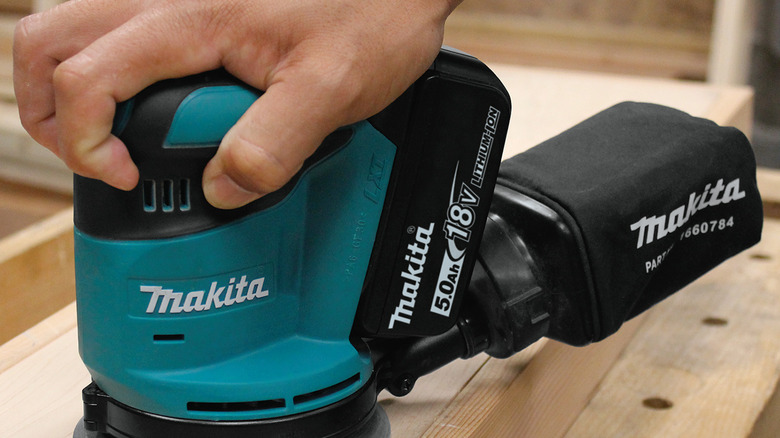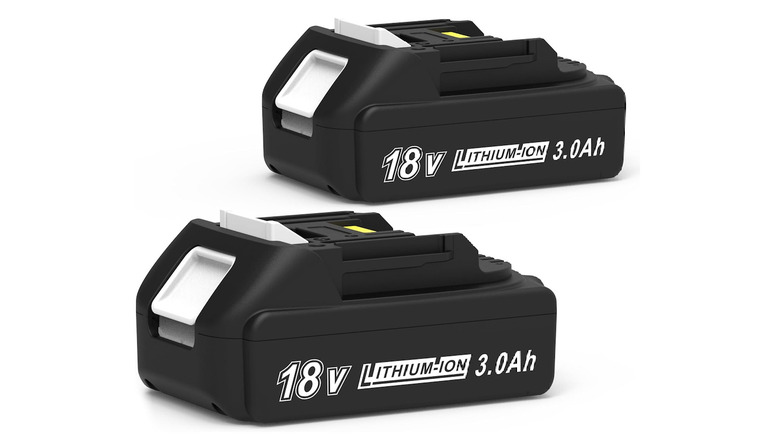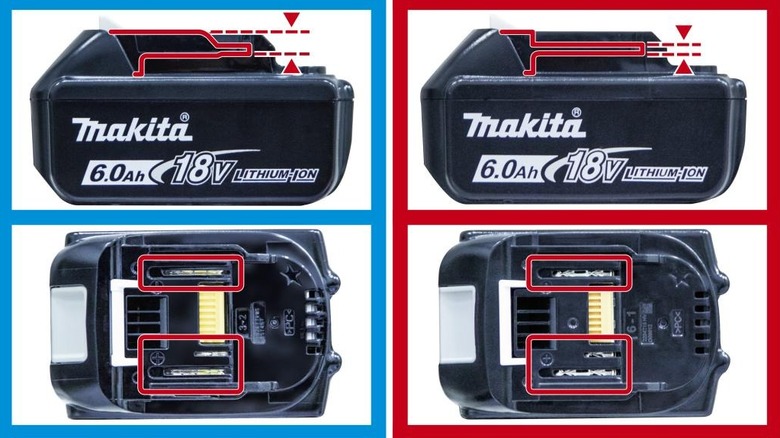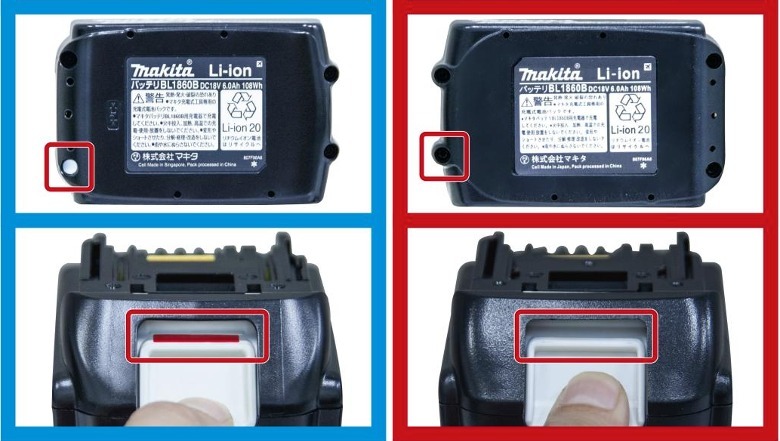How To Spot Fake Makita Batteries
Every major manufacturer of power tools, from Ryobi to Milwaukee to Makita, utilizes its own power ecosystem. A Makita battery, for example, is only meant to be used with Makita power tools. A brand having its own power system helps it to regulate its personal technologies, ensuring an ideal flow and utilization of energy to allow the tools to do their best possible work. Plus, a brand having its own battery packs helps to keep you in its product ecosystem and buying cool new tools.
However, as with just about any other brand-name product on the planet, trying to set up your own ecosystem will invariably attract bad actors looking to score a quick buck on your good name. In the case of Makita batteries, this takes the form of counterfeit battery packs designed to generally resemble the real thing without offering the same optimizations or safety precautions.
Using these kinds of untested, unlicensed battery packs can not only endanger the longevity of your power tools, but in extreme cases, endanger your own safety. If you only buy from reputable, licensed sources like big-name hardware stores, this usually won't be a problem, but if you're buying your Makita batteries through back channels, it would be in your best interest to know how to spot a fake.
The difference between generic and counterfeit batteries
Before we discuss how to spot a fake Makita battery in the wild, let's first briefly cover the difference between a counterfeit battery and a generic battery. If you've ever browsed around on Amazon for Makita batteries, you've probably spotted a decent number of off-model battery packs, similar in shape to Makita batteries but lacking Makita logos. These are generic battery packs, intended to be used as a cheaper replacement for the genuine article.
These generic battery packs will usually be up-front about the fact that they're not made by Makita. On an Amazon page, you can find the manufacturer's name under the product title, and the description will usually use language like "compatible" and "replacement." Since they're not made and tested by Makita, generic battery packs may have some safety concerns like counterfeit packs, but since they never claimed to be the real deal, it's kind of your own fault if something happens. Makita's warranties only cover the use of genuine products.
On the other hand, if you purchased a battery somewhere that claimed from the start to be a genuine Makita product, covered in Makita branding and logos, but ends up having notable physical differences or problems, then that is a counterfeit. In the simplest terms, while both counterfeit and generic batteries may have visible differences, a generic pack is not trying to trick you into thinking it's real, while a counterfeit pack is.
Fake Makita batteries have several physical differences
Near the start of 2024, after receiving numerous reports of fake lithium-ion battery packs proliferating through stores and to customers, Makita conducted an investigation of its own, putting together a list of points users can check to determine the authenticity of the battery. This list may not be exhaustive, as counterfeits can take many forms, but it's a great place to start.
Firstly, check the underside of the battery pack. One of the most obvious indicators of genuine Makita battery packs is a distinctive white plug located near the front of the bottom panel. If your pack is missing the white plug, it may be fake. While you're looking at the bottom, check the warning label as well. If you have another Makita battery handy that you know to be genuine, compare the fonts of the text written on the label. Fake batteries may have thicker, bolder fonts.
On the sides of the pack, press down on the release latch on the front. When you press down on the latch, you should be able to see a red stripe on the inside of it. If there's no red stripe, it may be a fake.
Finally, check the top of the pack. Take a close look into the three battery connection ports (see image at the top of this section); they should be smooth, straight lines. If they look pointed or jagged, they may be fake. Additionally, take a moment to measure the connector rail. The shape of the rail is supposed to be long on top, then gently slope downward. If the rail takes a hard right angle downward and is mostly straight, it may be fake.
If you have any doubts about the authenticity of a battery, don't use it. Either have it verified by an expert, or dispose of it safely.



